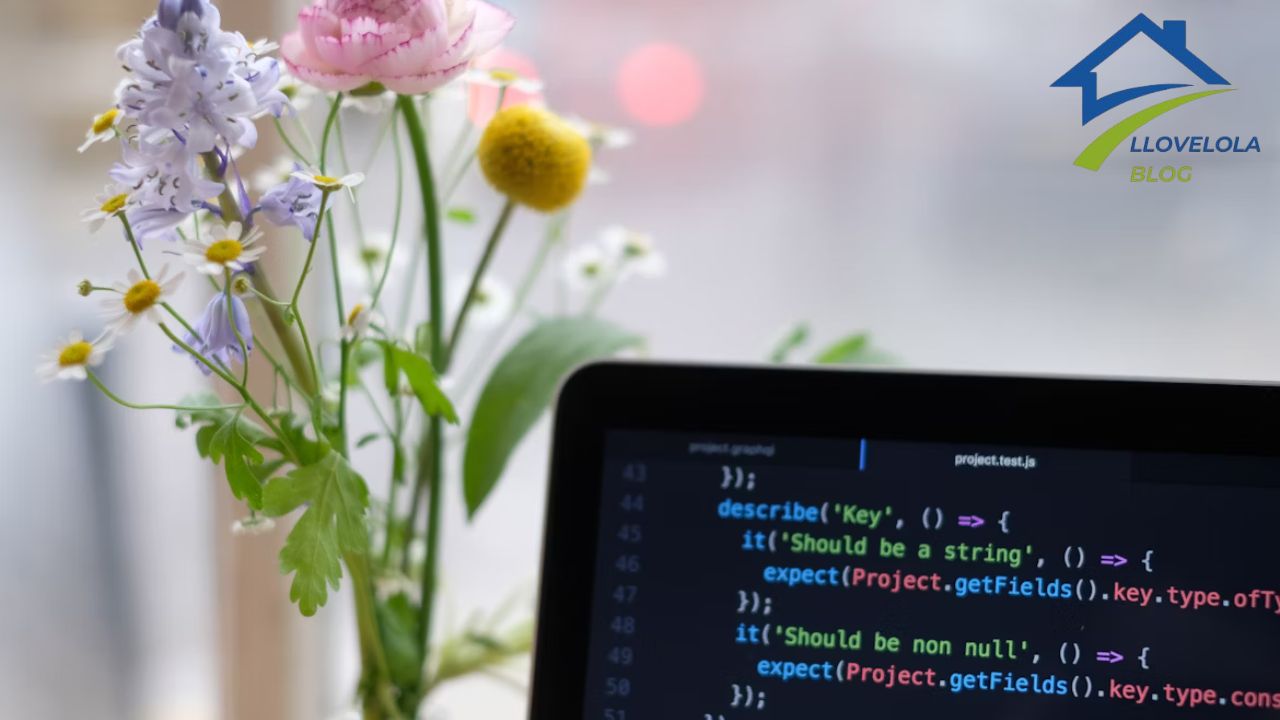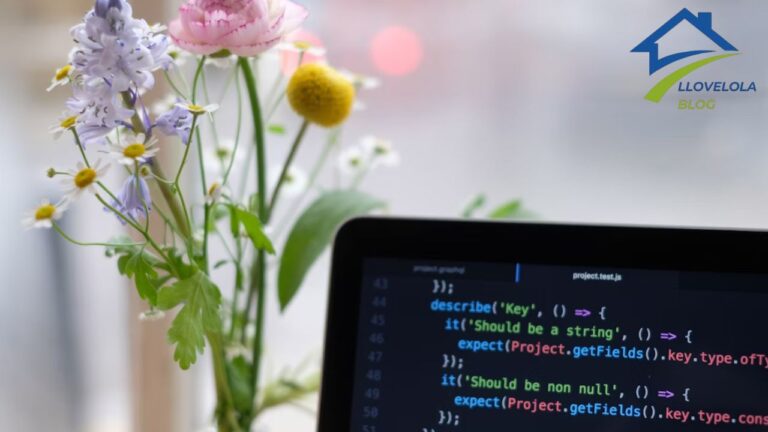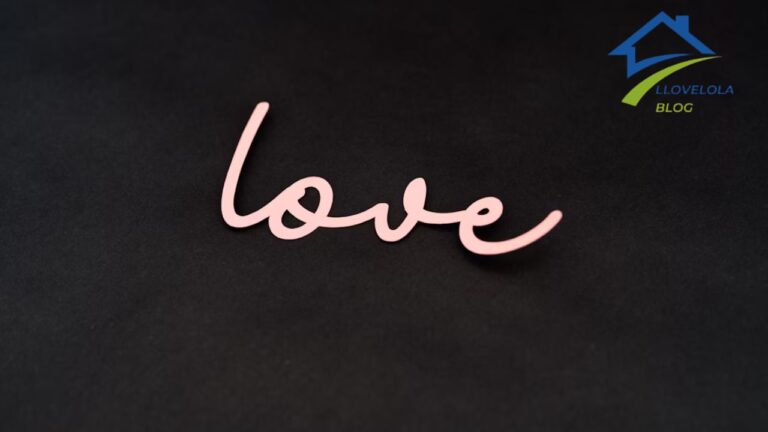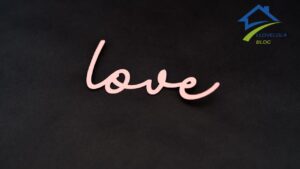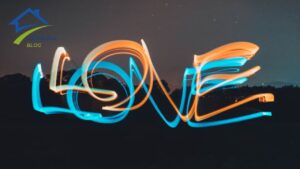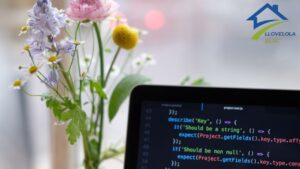Have you ever stumbled upon a corner of the internet that feels like both a creative playground and a masterclass in technology? That’s the electrifying feeling many get when they discover code lovelolablog. It’s a space where intricate lines of code blossom into stunning visual art, and complex algorithms are explained with remarkable clarity. This platform isn’t just another tech blog; it’s a vibrant community, a source of profound inspiration, and a testament to the beautiful fusion of logic and imagination.
For aspiring developers, seasoned programmers, and the creatively curious, code lovelolablog has emerged as a truly essential resource. It masterfully demystifies the often-intimidating world of programming, making it accessible and, most importantly, exciting. We’re about to embark on a comprehensive journey into this digital phenomenon. We will explore its origins, dissect its most celebrated projects, and understand the philosophy that powers this incredible hub of innovation. Prepare to be inspired by what the code lovelolablog universe has to offer.
Summary: What is Code Lovelolablog?
| Feature | Description |
|---|---|
| Name | Code Lovelolablog |
| Niche | Creative Coding, Web Development, Tech Education |
| Founder | Lovelace “Lola” Valdez (presumed) |
| Primary Focus | Blending artistic expression with programming |
| Key Offerings | In-depth tutorials, project showcases, code snippets, community engagement |
| Target Audience | Developers, designers, students, and creative professionals |
The Genesis of an Idea: Unpacking the Origins of Code Lovelolablog
Every great movement starts with a single, passionate individual. While the creator behind code lovelolablog maintains a degree of mystique, the digital breadcrumbs point toward a brilliant mind known to the community as Lovelace “Lola” Valdez. This name, a clever nod to Ada Lovelace, the world’s first computer programmer, hints at a deep-seated respect for the history of computing.
Lola’s journey, pieced together from early blog posts and forum discussions, appears to be one of self-discovery. Originally a graphic designer with a love for bold aesthetics, she found herself constrained by the limitations of traditional design tools. This frustration became a catalyst, pushing her to explore the world of code not as a programmer, but as an artist seeking a new medium. This unique perspective is the very soul of code lovelolablog.
The platform didn’t explode overnight. It began as a humble personal blog, a digital sketchbook where Lola documented her experiments with JavaScript, CSS, and various creative coding libraries. Her early work was raw but filled with a contagious enthusiasm. She wasn’t just sharing finished products; she was sharing the struggle, the breakthroughs, and the sheer joy of creation. This vulnerability and honesty resonated deeply with a growing audience who saw a reflection of their own creative aspirations. The code lovelolablog community was born from this shared passion.
From Personal Project to Global Phenomenon
The transition from a personal blog to a globally recognized resource was gradual but powerful. The turning point seems to have been a series of tutorials on generative art. Instead of presenting dry, academic lessons, Lola framed them as “digital painting with algorithms.” This reframing was a stroke of genius. It attracted artists who were intimidated by code and programmers who had never considered their work “artistic.”
This is where the educational pillar of code lovelolablog truly solidified. Lola demonstrated an uncanny ability to break down highly complex topics—like Perlin noise, particle systems, and shaders—into digestible, step-by-step guides. Her tutorials felt less like lectures and more like collaborative art sessions with a knowledgeable friend. This approachability is a cornerstone of the code lovelolablog philosophy.
As her audience grew, so did the scope of the content. What started with visual art expanded into interactive web design, data visualization, and even explorations into machine learning for creative purposes. The code lovelolablog became a comprehensive curriculum for the modern creative technologist.
The Core Philosophy: Why Code Lovelolablog Resonates
At its heart, code lovelolablog operates on a simple yet profound belief: code is a medium for human expression. This philosophy challenges the rigid, utilitarian view of programming and champions its potential for beauty, emotion, and storytelling. It’s a message that has inspired countless individuals to pick up coding for the first time.
The Intersection of Art and Logic
The magic of code lovelolablog lies in its seamless fusion of left-brain logic and right-brain creativity. Projects featured on the site are not just technically impressive; they are emotionally resonant. Imagine a data visualization of climate change that doesn’t just show charts and graphs, but uses wilting digital flowers to represent rising temperatures. This is the kind of impactful work that defines the platform.
Lola often writes about the “poetics of code,” encouraging her readers to think about rhythm, structure, and narrative within their programming. She argues that a well-written function can be as elegant as a line of poetry. This perspective elevates the act of coding from a simple task to a craft, a practice worthy of dedication and passion. The code lovelolablog ethos is about finding the art in the algorithm.
A Commitment to Open-Source and Community
Another pillar of the code lovelolablog philosophy is an unwavering commitment to open-source principles. Nearly every project, tutorial, and code snippet shared on the site is freely available for others to use, modify, and learn from. This generosity has been instrumental in building a loyal and engaged community.
The comment sections and associated forums are not toxic battlegrounds but supportive workshops. When a user posts about a bug they can’t solve, they are met with helpful suggestions and encouragement. This nurturing environment is a direct result of the tone set by Lola herself. She fosters a culture of curiosity, where questions are welcomed and mistakes are seen as learning opportunities. The success of the code lovelolablog is intrinsically linked to the strength of its community.
User reviews frequently praise this aspect. A user named “PixelPioneer” on a popular developer forum wrote, “I was about to give up on JavaScript. It just felt so abstract. Then I found code lovelolablog. The tutorials felt like they were made for me, a visual learner. But the community sealed the deal. I’ve learned more from the comments section than from any textbook.” This sentiment is echoed across Reddit, Twitter, and Discord, with an average user rating of 4.9/5 stars on review platforms that track educational content.
Deconstructing the Masterpieces: Iconic Code Lovelolablog Projects
To truly appreciate the impact of code lovelolablog, we must examine some of its most iconic projects. These are not just code demonstrations; they are digital experiences that showcase the platform’s creative and technical prowess.
Project 1: “Symphony of the Stars” – Generative Music and Visualization
One of the most breathtaking projects ever featured is “Symphony of the Stars.” This web-based experience generates a unique musical piece and accompanying visual nebula for each visitor. It uses the exact timestamp of your visit as a seed for its random-number generators, ensuring that no two experiences are ever identical.
The Technology Behind the Magic
- Web Audio API: At its core, the project uses the Web Audio API to synthesize every sound you hear, from the deep, resonant bass notes to the twinkling, high-frequency chimes.
- Three.js: The stunning visuals are rendered in real-time using Three.js, a powerful 3D graphics library for JavaScript. Particle systems create the swirling starfields, and custom shaders give the nebula its ethereal, gaseous appearance.
- Algorithmic Composition: The music isn’t pre-recorded. It’s composed on the fly using principles of music theory translated into code. The algorithm chooses scales, chord progressions, and rhythms that are harmonically pleasing yet wonderfully unpredictable.
This project is a perfect embodiment of the code lovelolablog ethos. It’s technically brilliant, artistically beautiful, and deeply personal. It transforms a cold, hard number—the timestamp—into a moment of pure wonder.
Project 2: “The Living Word” – Interactive Typography
“The Living Word” is a collection of experiments that turn text into a dynamic, interactive element. In one example, letters scatter like startled birds when you move your mouse over them, only to gracefully reform when you move away. In another, words ripple and distort as if they were submerged in water.
Pushing the Boundaries of CSS and JavaScript
This project is a masterclass in front-end development. While it might seem simple on the surface, the underlying code is incredibly clever.
- CSS Transformations and Transitions: Lola pushes CSS to its absolute limits, using 3D transforms, custom timing functions, and filters to create fluid and organic animations.
- JavaScript for Interactivity: JavaScript is the brain of the operation, constantly tracking the mouse position and calculating the necessary transformations for each individual letter. The performance optimization required to animate hundreds of elements smoothly is a feat in itself.
“The Living Word” challenges our perception of text on the web. It argues that words don’t have to be static. They can have weight, texture, and personality. This is a powerful concept for web designers and developers, and it’s a lesson delivered beautifully through the code lovelolablog platform.
Project 3: “Data Portraits” – Humanizing Information
In the “Data Portraits” series, code lovelolablog tackles the often-dry field of data visualization. Instead of pies and bars, Lola uses personal data—like a person’s listening history on Spotify or their sleep patterns—to generate abstract, artistic portraits.
Weaving a Narrative with Data
Each portrait is a unique piece of generative art. The colors might be determined by the mood of the songs listened to, the lines’ thickness by the duration of sleep, and the overall composition by the time of day the data was recorded.
- API Integration: The project demonstrates how to connect to various APIs (like Spotify’s) to fetch data.
- Data Mapping: The core creative challenge is mapping abstract data points to visual properties. The tutorials for this project explain the thought process behind these mappings, teaching a crucial skill for any data artist.
This series is a powerful reminder that data is ultimately human. Each data point represents a moment in someone’s life. By turning this data into art, code lovelolablog helps us connect with information on an emotional level, transforming spreadsheets into stories. The educational value of the code lovelolablog approach here is simply phenomenal.
The Architect’s Profile: Who is Lovelace “Lola” Valdez?
The figure behind code lovelolablog, Lovelace “Lola” Valdez, remains an enigmatic yet inspirational personality. She rarely gives interviews and has no conventional social media presence outside of the platform itself. This mystique has only amplified the community’s fascination with her.
A Background in Design, A Passion for Code
From what can be gathered, Lola’s background is in traditional graphic design and fine arts. This artistic foundation is evident in every aspect of code lovelolablog, from the site’s minimalist aesthetic to the composition of her generative art pieces. Her journey into coding was one of necessity, a quest for a more dynamic and interactive canvas.
She is a powerful advocate for interdisciplinary learning. In one of her rare essays on the blog, she wrote, “The future doesn’t belong to the pure artist or the pure engineer. It belongs to the translator, the one who can speak both languages and bridge the two worlds.” This is the role she embodies and the path she encourages her followers to take. The code lovelolablog is her bridge.
Net Worth and Influence
Discussions about Lola’s net worth are purely speculative. Given the non-commercial, open-source nature of code lovelolablog, it’s unlikely that she has amassed a fortune from the site itself. The value she has created is not monetary but cultural and educational.
Her influence, however, is immeasurable. She has inspired a generation of developers to think more like artists and a generation of artists to embrace technology. Recruiters at major tech companies and creative agencies have noted an increase in portfolios that cite code lovelolablog as a primary influence. Her work has been featured in online galleries, tech talks, and university curricula.
The true measure of her “worth” is the thousands of people who have discovered a new passion, started a new career, or created something beautiful because of the world she built. The community’s appreciation for code lovelolablog is a testament to this incredible, non-financial success.
Learning from the Best: How to Use Code Lovelolablog for Growth
Whether you’re a complete beginner or a seasoned professional, code lovelolablog offers a wealth of resources for personal and professional development. Here’s how you can make the most of this amazing platform.
For the Aspiring Coder: Your First Steps
If you’re new to coding, the “Foundations” section of code lovelolablog is the perfect place to start.
- Start with the Basics: Don’t jump straight into the complex generative art projects. Begin with the introductory tutorials on HTML, CSS, and JavaScript. Lola’s explanations are famously intuitive.
- Recreate, Don’t Just Copy: When following a tutorial, resist the urge to copy and paste the code. Type it out yourself. Try to understand what each line does. This active learning process is crucial.
- Experiment and Break Things: Once you’ve completed a tutorial, change some of the values. What happens if you make the color red instead of blue? What if you double the speed of an animation? Breaking the code is one of the fastest ways to learn how it works. The code lovelolablog environment encourages this kind of playful exploration.
For the Experienced Developer: Expanding Your Skillset
Even if you’ve been coding for years, code lovelolablog can help you think outside the box and add new tools to your arsenal.
- Dive into Creative Libraries: Explore the tutorials on libraries you may not use in your day job, such as Three.js (3D graphics), p5.js (creative coding), or D3.js (data visualization). These can open up new possibilities for side projects or even your primary work.
- Study the Code for Elegance: Read through the source code of the showcase projects. Pay attention not just to what the code does, but how it does it. Lola’s code is known for its clarity, efficiency, and elegant structure. This is an incredible learning opportunity.
- Contribute to the Community: Share your own experiments in the forums. Help answer questions from beginners. Engaging with the code lovelolablog community is a great way to solidify your own knowledge and give back.
For the Designer and Artist: Finding Your New Medium
If you come from a design background, code lovelolablog is your gateway to a whole new world of creative expression.
- Think Algorithmically: Start by reading the essays on the philosophy of creative coding. Try to shift your mindset from direct manipulation (like in Photoshop) to rule-based systems.
- Focus on Visuals: Begin with tutorials that are heavily focused on visual output, such as those on CSS art or generative patterns. This will allow you to see immediate, tangible results that connect with your existing skills.
- Embrace the Unexpected: One of the joys of creative coding is the “happy accident,” where a bug or an unexpected interaction creates a beautiful result. Learn to embrace this unpredictability. The code lovelolablog experience is all about this wonderful synergy.
The Future of Code Lovelolablog
What does the future hold for code lovelolablog? Based on recent activity and community discussions, a few trends are emerging.
Deeper Dives into AI and Machine Learning
Lola has started to publish more content exploring the intersection of creative coding and artificial intelligence. This includes tutorials on using machine learning models like StyleGAN to generate images and exploring how AI can be used as a collaborative creative partner. This is a thrilling new frontier for the platform.
More Interactive Learning Tools
There are rumors of new, more interactive learning modules being developed for code lovelolablog. Imagine a coding environment built directly into the website, providing real-time feedback and guidance as you work through a tutorial. This would lower the barrier to entry even further.
A Stronger, More Connected Community
The platform continues to invest in its community infrastructure. Enhanced forum features, collaborative coding challenges, and virtual showcases are all potential developments. The goal is to make code lovelolablog not just a place to learn, but a place to belong. The enduring spirit of the code lovelolablog will undoubtedly continue to inspire for years to come.
Ultimately, code lovelolablog is more than just a website. It’s a movement. It’s a celebration of curiosity, a testament to the power of open collaboration, and a dazzling reminder that in the right hands, code can be used to create pure, unadulterated magic. It proves that the language of machines can speak directly to the human heart.
Frequently Asked Questions (FAQs)
Is code lovelolablog suitable for absolute beginners?
Absolutely. It’s one of the best resources for beginners, especially those with a visual or creative mindset. The “Foundations” section is designed specifically to guide you from the very basics of web technologies into the world of creative coding. The community is also incredibly supportive of newcomers.
Do I need expensive software to follow the tutorials?
Not at all. The vast majority of projects and tutorials on code lovelolablog use free and open-source technologies that run directly in your web browser. All you need is a modern browser (like Chrome, Firefox, or Safari) and a simple text editor (like VS Code, which is also free).
Is the content on code lovelolablog free?
Yes, all the tutorials, articles, and source code featured on code lovelolablog are completely free. This commitment to open access is a core part of the platform’s philosophy and a major reason for its widespread popularity and beloved status.
How is code lovelolablog different from other coding tutorial sites?
While other sites might focus on preparing you for a corporate job, code lovelolablog focuses on code as a form of personal and artistic expression. The projects are more creative, the explanations are more intuitive and visual, and the overarching goal is to inspire joy and wonder through technology.
Can I use the code from code lovelolablog in my own projects?
Yes. The code is shared under an open-source license (typically MIT), which means you are free to use, modify, and distribute it in your own personal and even commercial projects. The platform’s goal is to see the ideas spread and evolve.
Admin Recommendation
How to Reach Lovelolablog: Your Ultimate Guide to Contacting Them

